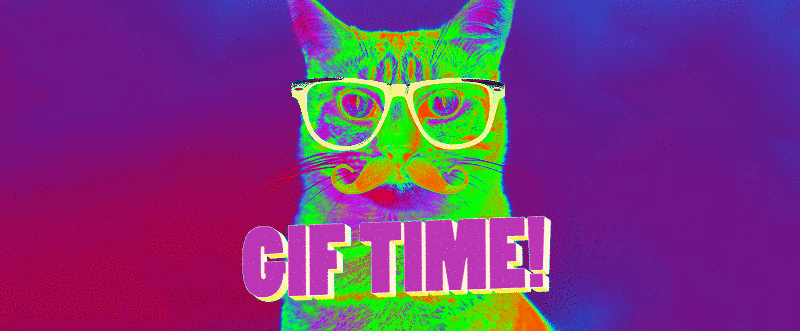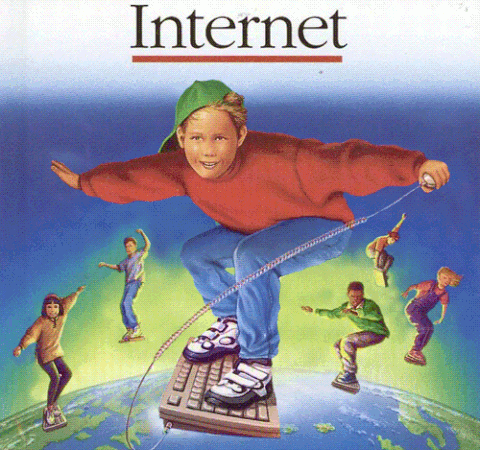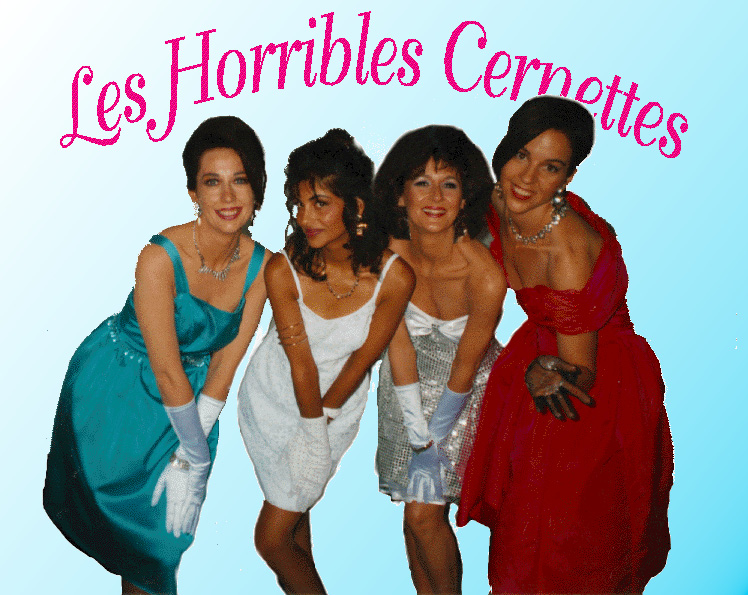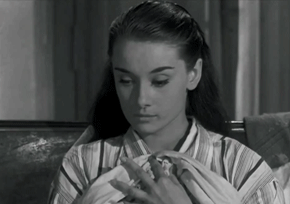"GIF is dead, long live the GIF!"
In the wake of Internet searches for replacing the most cult and defective file type

November 5, 1999 was declared the Day of Burning All Gifs [Burn All GIFs Day]. If you then went to the home page of this project, you would see a plan for its implementation, as simple as its name: "On the Day of burning all GIFs, all GIF users gather in Unisys and burn all their GIF files." Accompanied by all this are the proud antipoles of GIF - PNG files.
')
Despite the joke associated with burning files, accompanied by a funny request “to extinguish all the gifs before leaving”, expressed dissatisfaction was real, and the mission was real: once and for all save the web from its scourge, the GIF format.
By that time, the format was already more than ten years old, it originated five years before the network itself, and it began to become obsolete. He supported a measly 256 colors. Its animation capabilities were worse than a paper notebook. It was clearly underdeveloped compared to any newer file format. And among other things, patent holders have been threatening users with format for five years. By the "Day of the burning of all gifs" he was already on the edge of the abyss. Specialists in file formats and the future of the network surrounded the obsolete format, armed with pictures with torches and forks in PNG format.
And yet, somehow, you and I ended up in such a situation. It's been 17 years, and the GIF is not dead. He rules the Internet.

This year, Twitter introduced an embedded search engine that provides access to thousands of gifs. The Giphy company, looking after the library, received $ 55 million in the last round of financing and raised its capitalization to 300 million. A year before, Imgur, which until recently had served as the de facto standard for the Reddit media monster and itself worth $ 200 million, rolled out GIFV, its own attempt to modernize a 30-year format.
GIF as a work of art - short and silent looped animation - is more popular than ever. But as a file type, as a way of storing zeros and ones that computers convert to animation, is being criticized. The war for deliverance from him has been going on for many years and never ended. All these years after the “Day of burning all gifs”, GIF remains both flawed and irreplaceable. Whether the current popularity of the hyphae will save them forever or completely kill them - you can be sure that nothing like this will happen again.

Ask anyone what a GIF is and one of two things will happen. First, you will quarrel or agree on the pronunciation (hard "G", whatever you may say). And then they will tell you something about the animation. Dancing bananas, spinning text. GIF is looped and small. Modern silent movies with automatic repeat. And it will be only the very tip of the iceberg.
When GIF was born in 1987, no one ever thought about animation at all - as well as the worldwide WWW network. A team of programmers from CompuServe, led by Steve Wilhite, a famous father of the format, created a GIF based on something completely unrelated to today's animation tricks. The cornerstone was the Lempel-Ziv-Welch compression algorithm (LZW).

Unless you study data compression algorithms, this bulky name will be unfamiliar to you. But its quiet influence on the digital world cannot be denied. LZW is a data lossless compression algorithm, a set of instructions that allows bits and bytes of pictures and files to fit into smaller sizes without losing any kind of data. As if you packed all your clothes in a smaller suitcase, squeezing them and throwing away nothing. The LZW algorithm was not the first such algorithm. It was first described in June 1984 in a simple and understandable article by IEEE Computer magazine entitled “High-Speed Data Compression Technique”. It was based on the previous LZ78 algorithm and contained major improvements. LZW was quickly adapted to work inside such formats as ZIP and GIF.
This compression gave GIF properties, while more like superpowers. Previous innovations in image compression, such as run-length coding , compressed files by simplifying sequences of repetitive data. A string of pixels in a picture that is stored without compression, for example, "one black pixel, one black pixel, one black pixel" was compressed into "three black pixels". Encoding of lengths of series normally coped with simple black-and-white images, but it would suffocate, working with several dozens of colors, and their mixing would simply choke.

A more complex approach implemented in LZW allowed computers to compress data lines much more complicated than just several identical pixels in a row - the main thing is that there should be at least some repetitive pattern. The essence of the method was like if a computer invented a new word "strong" instead of the sequence "blue pixel, white pixel", and then "violet" instead of the sequence "strong pixel, purple pixel" and so on, cramming more and more information in a new word. This approach allowed GIF to reduce photorealistic color images with intermittent colors in small practical packages.

All these tricks appeared just in time. Modems, video cards, and CD-ROMs helped flourish the home-computer boom that preceded the Internet, GIF became the instant standard for photo-realistic images. Now the idea of a static hypha may look like a heretical, but in 1992 there were no other gifs, and the pictures were wonderful. Take at least the CD “GIFs Galore” [an abundance of gifs], which contained a huge number of pictures just because it was possible. In the mid-90s, when the web began to spin, a GIF was rolled into the asphalt of a new information highway. In 1993, the revolutionary Mosaic browser was launched, supporting two image formats - a proven GIF utility and nascent JPEG. The first photo, which appeared on the Internet, was in GIF format.

After 20 years, it is already difficult to see the GIF used for storing photos, since it has been supplanted by newer and improved JPEG and PNG formats. But the animated gif is still holding. And flooded the entire Internet. Which is ironic, because if a static GIF knew success, then the animated was always perceived as its strange relative. And he continues to live, despite the attempts of the Internet to kill him, and terribly copes with the only task for which he is used.

Here is the terrible secret of modern gifs. These animations scattered around Reddit (especially suspiciously good quality)? Most of them are not gifs. Some of the gifs on this page are also not gifs. These are video files - similar to those posted on YouTube - but with orders to behave like a GIF.

GIF automatically starts and loops because this is how it works. This property is embedded in the format. And the video files pretending to be gifs, others. They need a code embedded in the page surrounding them, ordering them to behave in a similar way - to play without sound, to loop, not to show the control panel, or, forgive my God, the pause button. This is a video with tied hands that made it seem easier than they are.
In addition to semantics, they have nothing in common. Having begun to understand the difference between ordinary and fake gifs, it is easy to see why more complex pretenders are better than the original.
An animated gif is a sequence of frames played one after another, with a delay between them, to create the illusion of movement. All frames are contained in a single GIF file that stores all static images and instructions for playback speed. This is a small digital notebook.
GIF is not just a repetitive video without sound. Digital video is a much more complicated thing. Unlike gifs, videos do not contain every frame of animation, not in the usual sense. Some frames in a single video file are called I-frames and stored as full-length pictures, but between them there are B- and P-frames, simply containing instructions for converting one frame into another, by changing a certain number of pixels or colors, leaving everything else untouched. .
Remember that we talked about LZW - how do static hyphae store instructions instead of every single pixel? Digital video takes GIF technologies, which it applies to space and uses them both in space and in time. Since the average video contains up to 60 frames per second, this technology saves dofigisch bytes. Gifs have to sacrifice quality to save space, but videos can look much better and take much less.
Take, for example, this is a video in which a cute dog behaves very, very well:
Such a gif would occupy more than 60 megabytes, since each frame must be stored as a separate image. In the form of a mp4 video file, this clip takes up less than 3 MB, since the instructions describing the transformation of one frame with a good dog into another frame with a good dog are minimal. This difference in size is equivalent to the difference between several hours of music and downloading a single song.
One giant gif is enough to shut the web page and make it load at the speed of molasses. On mobile phones, where every megabyte is expensive, one giant gif can have a decent chunk of your monthly traffic. In addition, the GIF does not have a launch button, which you can choose not to press - it just crashes into the door and starts loading. And does it badly! Modern videos can be played by downloading the first bytes first and showing the video while the entire clip is still being downloaded. And as stupid as a tree, gifs can only jerk and play convulsively in pieces at the first load. All these quirks make gifs dangerous for the modern mobile web.
But all these shortcomings are balanced by one big advantage: gifs are much easier to use than video. Using gifs does not require plug-ins, codecs, embedding code. Works everywhere, simply and immediately. Copy the link, download the file - and go.
So why there is no such format that would combine these two possibilities? Why not combine the convenience of video and the simplicity of gifs?
This has already been attempted, and the best opportunity appeared and disappeared 20 years ago.

"We all felt cheated."
In late 1994, the GIF was an aging, but convenient, Internet standard. And in early 1995, a coalition appeared, demanding its destruction. What happened?
Michael K. Battilana, the developer who wrote one of the best and most in-depth reports on the controversy of that time, was in the thick of things during the changes. “After all the work, all the successes, it suddenly became clear that there is a patent. No one knew about this. ”
It was the original sin of the GIF, an oversight that caused the outbreak of war in 1994, when CompuServe and Unisys announced that Unisys would issue a license for CompuServe to LZW, with the possibility of using it in the GIF for a nominal fee. In addition, Unisys was looking for opportunities to enter into similar agreements with everyone who dealt with files. For savvy techies, it was like a fiery inscription on a wall. After many years of free use of the GIF, during which the worldwide network was born, the creation of gifs will suddenly cost money.
The phantom of this so-called “gif tax” gave rise to a sudden wave of rage, during which exponential removal of gifs from the BBS and websites were conducted. Pat Clawson, president and director of TeleGrafix Communications Inc, quickly declared World War II in an open letter the day after the announcement:
The joint announcement by CompuServe and Unisys, stating that users of GIF images must register and pay royalties under the threat of gifs in the past by January 10, is the online equivalent of a sneak attack in Pearl Harbor. The announcement of the tax on the GIF, made on December 29, in the lull between Christmas and New Year, obviously, was specifically designed to cause the greatest damage, while the unsuspecting public had celebrated holidays.
Despite the popular misconception that Unisys wanted to collect GIF taxes on its own, robbing ordinary geeks and webmasters for using images, lawsuits were directed against the software with which gifs were created. Not against moonshine, but against moonshiners. But it was little consolation for software developers who created and sold image editing software, and the first step towards the disappearance of the GIF was made - the race for alternatives was launched.
The rage developed into a practical plan, formed in the yuzenet group “comp.graphics”, in the discussion thread “Thoughts on the replacement of the GIF format”. Here, the most advanced web engineers — including those who have made great contributions to the creation of JPEG — discussed alternatives to this format. As a result, a new type of lossless compression appeared that could replace GIF in many aspects and did not have its technical drawbacks: a little thing called PNG.
A year later, in 1996, the group released version 1.0 of the Portable Network Graphics format (PNG, short for the original recursive abbreviation PING, which stands for “PING Is Not GIF”), designed to kill the GIF. PNG supported thousands of colors, as opposed to 256 GIF colors. He had improved support for transparency. And what is most interesting, the format was open, did not contain patents and exempted users from the threats of lawsuits. He was better at everything than GIF.
Nearly. PNG did not support animation, but this Achilles heel of it was intentionally created. PNG developers considered dual use of GIF not as an advantage, but as a bad design. “They were very active against animation,” recalls Battilana. What kind of format would it be if he had the right to suddenly launch an animation? What video format works so inefficiently? Bad. This means that PNG from now on and forever will contain only still images, and another, future format will be engaged in animation. In addition, according to the logic of the creators, all this animation was just unnecessary garbage.
If you have recently visited the Internet, you know how far this point of view turned out to be far from the truth. All these engineering bigwigs have not guessed how useful this unnecessary garbage can be. “GIF was not intended as a video format, but for pages and browsers that did not support Flash, it was the only alternative,” says Battilana. “Even today's browsers do not have a good alternative to GIF, except for very complex and patented options such as MPEG-2 or MPEG-4.” And gifs just work.
PNG overclocked in the following years, helping to bring static gifs to almost complete extinction. But these animations kept the format afloat, even when PNG supporters turned the knife in the wound. Even on the Day of the Gifs burning in 1999 - another peak of the anti-Gif movement, spurred by Unisys attempts to hurt the dough on the LZW-patent, which ended a few years later - there was no alternative that could do the simple thing that performed the GIF . Only by 2001, the PNG development team had an animated MNG format, a failed GIF killer. Coming out, he found that the web had already surrendered to the gifs.
By 2004, the battle was over. Unzys patent on LZW has ended worldwide. “It was a blast,” recalls Battilana. “Everyone could use the GIF.” After a decade of attacks coming from the most influential people on the Internet, the GIF format survived, tacky, but won.
If the world then could not replace the GIF, under the auspices of a single goal, can this happen today?

The archive of the WWW consortium preserved the moment when the GIF finally succumbed. It is stored as if frozen in a piece of amber, surrounded by 200,000 obscure words of technical jargon. The huge document of 2008 is the first public appearance of an HTML5 draft, a dictionary defining the building blocks of the modern web. We are interested in paragraph 3.14.7. "The video element". This section has finally described the standard of behavior for live images on the web.
In the wicked old days, Adobe Flash and RealPlayer dominated the field of web videos, requiring third-party plug-ins or other software that needed to be downloaded and updated. It was a complicated decision, superimposed on the web, built without video support. This situation was so annoying that the simplicity and ubiquity of the gifs, which were his only virtues, helped him to keep afloat. But when HTML 5 legalized the video on the web, with simple solutions to the problems of eliminating the many inconsistencies between browsers and controlling the display of the video, these advantages began to pass. With the spread of HTML 5, GIF ran into a serious contender for the first time in ten years.
The first winds of change came in 2014 when Gfycat began to convert its gifs into video. But a more mature and intriguing solution came a little later, in the form of Imgur GIFV format.
In fact, GIFV is the standard implementation of video in HTML 5. If you click on the link to GIFV, you will be taken to a page that looks like it contains only one GIF. The clip is automatically played, it is looped, has no controls and no sound. This is a great example of a format pretending to be a gif, a video relegated to the look of its old rival. The cherry on the cake is the .GIFV file extension visible in the browser. This familiar and friendly feature gives the situation a sense of using the old familiar format.
But GIFV is not a GIF, and not a video, and not a format, combining them together.This is an illusion. As the founder and director of Imgur, Alan Schaaf, told me on the phone:
GIFV is not a new format, we did not create a new file type. This is just a tricky wrapper, a file extension meaning that you will receive a video that works just like a GIF in a large number of places. There are different controls in different browsers, but GIFV takes this into account, so if you place a GIFV, it will look like a GIF.
This cunning trick has a side effect: GIFV is not a thing, but a place to which the Internet connection needs to be reached. GIFV pieces can be downloaded and stored, these will be .webm or .mp4 files. But the real GIFV lives only online, vaccinated to the page on which it is placed and depends on the fact that Imgur will continue to place this file in their place and will not change anything in such a way that everything will break. You can send this link to others, but you cannot download it and work with it, as with the good old gif.
Imgur GIFV is not the only example of such a compromise. Many social networks that support GIF, work with them in a similar way. If you upload a gif in Twitter, it does not appear there just like that. It is converted to .mp4 file. When you post a gif in Facebook, it turns into some kind of nightmarish cyborg, a hybrid of video and code so complicated that even I cannot understand what it does, and even less, download it and post it somewhere else.
The web of 2016 is different from the web of 2006. It suffocates from these fenced gardens, from these “platforms”. And although everyone can understand what a GIF is, these platforms usually do not “support” the gifs, but suck them in and prevent them from escaping. Imagine it this way: if the GIF were pictures within a framework that you could take and transport to a new home, these hyphon-like videos would be frescoes painted directly on the walls. The form is the same, but the functionality is lost. GIFs are suitable for distribution, and you can't take a gif from Twitter.
The ideal solution would be the possibility of unhindered movement of gifs between sites and services, which today support it almost in half. Something that would allow you to bookmark .mp4 from Twitter and later send it with text. Something that would support a usable library of your favorite animations, regardless of the file type. That is, Giphy.
In February 2016, Netflix for GIFs capitalized at $ 300 million. Giphy has all the gifs, and Giphy is everywhere. GIF button on twitter? Works thanks to Giphy. Facebook? Giphy is there too. Keyboard mobile phones? There is. Messaging systems? Of course. Email? Of course. Tinder? Yes. Slack? Yeah.
With a dozen of advantages, Giphy is in a unique position to solve two problems of hypophony-like videos: the inability to transfer them from one social network to another and the inability to save them in a form different from the link to the site. If the GIF is on Giphy, you can use it wherever Giphy is used (which is almost everywhere). Create an account and you can save your favorite files to your library. Giphy will deal with all the complex logistics of translating real gifs into those strange formats that support Facebook or Twitter.
He has his drawbacks, starting with copyright issues. Sharing GIFs on Giphy is like giving a DVD collection for a Netflix subscription. You lose control for convenience and choice. Giphy absorbs GIF and changes format-agnostic, turned into an art platform, into a branded canon - and all that follows.
Look at the service agreement. Giphy prohibits not only such obvious things as porn (a very popular topic for GIF), but other things like “lies, delusions, wrong or inaccurate”, whatever that means. Giphy supports DMCA. Will they remove viral sports videos that violate copyright? Or pieces of television shows and films that make up most of the gifs? File types should not care about such garbage, because you can not sue the GIF. Only service.
This problem has already been encountered on Twitter and has gone over to the side of censorship, having closed many sports blogs for posting gifs that the NFL said they own the rights to. And while we were all laughing at the absurd attempts of the IOC to ban gifs with the 2016 Olympics, Twitter quietly and helpfully satisfied the DMCA requests. Elsewhere on the Internet, the YouTube Content ID automatic content rating system removes clips at the slightest hint of a violation. We are guilty until we prove the opposite and fair use cases are foggy at best.
Giphy, a company with money and employees, would be irresponsible, lead it differently. In addition, you can not take millions of investments in order to get involved in the courts - especially when your ideal future is based on advertising. Take the hypothetical case described by Giphy director Alex Chang last year on CNBC:
Imagine that when someone is hungry, he searches for gifs with big mams and puts them out. This is the holy grail of advertising. Your marketing ceases to be marketing and becomes part of the culture and part of the natural communication. This is a very big potential.
Not that it was mean. This is simply one of the features of the company, exactly the same as Unisys’s desire to capitalize on the algorithm for which they owned the patent. But Giphy does not create a file type, but a service. It has no expiring patents or underlying technology that will someday become public domain.
The good news is that Giphy still maintains connections with old and free technology. Digging into the archives of Giphy, of course, you can find embedded HTML 5 videos. But you can also find GIF. Why?As Nick Hasty explained to me in an email, the head of the engineering department at Giphy:
Giphy believes in the empirical magic of viewing an infinite loop of pictures. And although we recoded all the gifs into popular video formats and put them on the site, the fact that GIF is played everywhere, you can copy, paste and drag it and they do not force you to open another interface or application for viewing, making them the best choice for our purposes compared to with alternative formats.
He is right, the ubiquity of GIF makes them very useful as a universal language for communicating dozens of applications and platforms. This is the original from which you can make copies. But if Giphy also becomes ubiquitous, this GIF property will no longer be its advantage. At some point, perhaps, Giphy will be able to replace gifs with not some alternative format or a GIFV-like mixture of gifs and videos, but with itself.
In applications like Tinder, this future is already here, and Giphy is the only option for everything that resembles a GIF. Twitter and Facebook have made some progress in this direction. It’s easy to imagine a future in which the most popular sites in the world reject GIF downloads and leave Giphy as the only option.
But what if Giphy stops accepting the GIF name that gave it? Gone in the past editing frames in Photoshop. Instead, everyone will be able to create gifs by clicking on the "Create" button, chopping a YouTube video and sending the result to the cloud. These looped videos will load faster and look better than any real GIF and will not eat off as much traffic - while the Giphy servers are working and no one sues it.
This will be the perfect end of the gif. His strength lies in the simplicity and the fact that he appeared at the right time in the right place. Giphy, on the contrary, is amorphous and modern. GIF is a dandelion that appears tirelessly among other flowers in the garden year after year. Giphy is an asphalt surface.
"I can not look at the material without starting to look in it for opportunities to create a GIF."

This can be understood. After you've done a couple of hundred looped videos, you start to see them everywhere. It happens to me, but Jason Walter - known online as EditingAndLayout - has already moved to another level. He has his own subreddit and years of manufacturing gifs, and his works are gifs of excellent quality. His style is modest, but has no equal. “There are a lot of graphic designers who make gifs with special effects just like cinematic ones. I don't know how to do it, ”he says. He likes to use fragments of old movies, he takes pieces of digital video and turns it into something a bit more like film. His favorite gif is taken from the 1953 Roman Holiday film. “Audrey Hepburn, she laughs like that. I adore this moment. I do not know why".
Protesting gifs, video sequences, often with subtitles, as a phenomenon of pop culture, may be the most prosaic art form, but Walter will probably be one of the best experts in this genre. “When I started to do them, almost no one did them in Photoshop. There are many gifs in which the character speaks no more than two words in a video, but there are two subtitles written in two sentences. This is full on Tumblr. ”
Walter gifs are not like that. You must have met them. They are smooth and rich in color. Most importantly, the subtitles fit the video (unless they say something completely different).
His work with his commitment to quality makes him an ideal candidate for the use of video gifs. His longest, most ambitious gifs would be unwieldy without video compression. But he loves the old-school gifs more because of their limitations.
“When I started, Imgur had a limit of 2 MB. It was impossible to even download the file anymore. It was necessary to think how to reduce files. ”
There are many ways - cutting frames, working with transparency, reducing resolution, reducing the palette, a mixture of several compression techniques. They all degrade the quality, but with skillful application it will be barely noticeable.
All these tricks are no longer so necessary. Imgur loads gifs up to 100 MB in size and turns them into videos, like Gfycat. Some still adhere to restrictions. Twitter held on to 5 MB, until recently it raised the bar to 15 MB, so the gap between the creation of looped clips and their original digital media is increasing. “GIF to video killed the art of optimizing and creating good and small gifs. I miss that. Sometimes I try to reduce them to 5 MB. ”
Walter is not against the video image, but he is concerned about the direction of development. “Anything that can reduce the size of the format is useful. I have a traffic limit at home. There are restrictions on the phone. But technology leads to the fact that the creators of gifs become lazy. They make gifs of size 1920 to 1080 with a bunch of flowers. Under 50 MB. It's easy - it's just a video clip without sound. ”
This anxiety, an understanding of what is happening, is useful in itself. The history of the gifs responds in their future. After our conversation, Walter announced his retirement, but the subreddit he founded, R / HighQualityGIFs, lives like a fortress of well-made gifs and video gifs. It is read by 150,000 subscribers, it contains all the expert information on creating gifs in Photoshop or in Adobe After Effects, or on creating a perfect loop. This is just one of many places on the Internet dedicated not only to the art form, but also to the respect and preservation of the original medium, at the same time a school and a museum.
"The puzzle associated with the creation of a good quality gif and at the same time satisfying the restrictions on volume is an art form for me."
And as long as at least one true blacksmith gifs remains, the GIF format will not die.

Source: https://habr.com/ru/post/397271/
All Articles